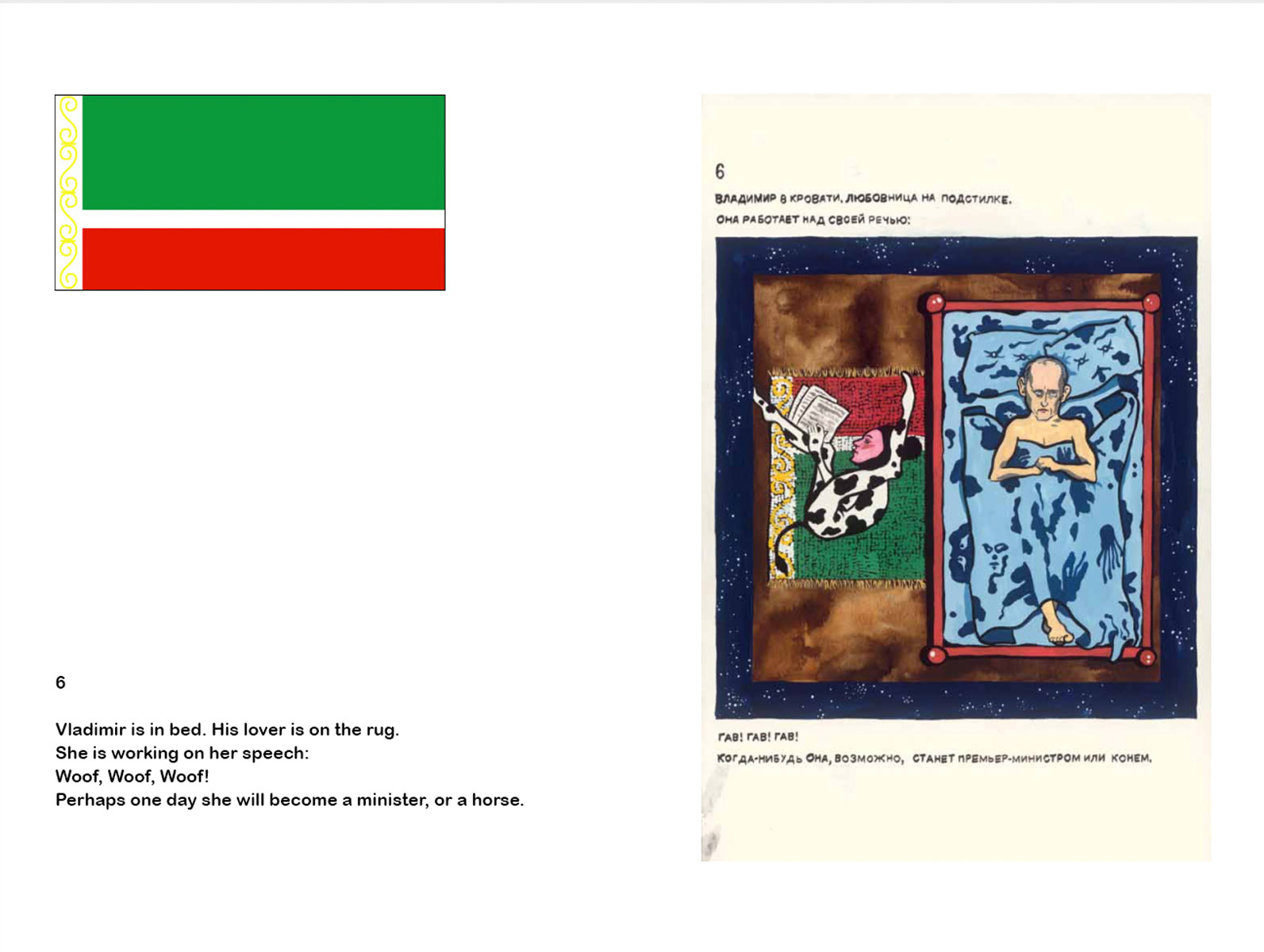Maxim Komar-Myshkin: “Vladimir’s night”
2011-2014
The Buried Alive emblem
Maxim Komar-Myshkin was the pseudonym of the fictive Russian poet Efim Poplavsky (1978-2011), who immigrated to Tel Aviv in the early 2000’s. There, he founded the Buried Alive Group, a collective of ex-Soviet artists, writers and film makers who disavowed the culture around them and seeked a zombie-like artistic existence. Suffering from acute paranoia, Komar-Myshkin believed that Putin had a personal vendetta against him, and that his assassination was pertinent. The album Vladimir’s Night, his artistic revenge against Putin, was created in secrecy and discovered after the artist committed suicide. Disclosing, perhaps, its author’s conspiratorial perception, the album hides a plethora of wide-ranging references, from the financial schemes of post-Soviet Russia and Putin’s political life, to Russian medieval literature and early Soviet advertisements. In the book Maxim Komar-Myshkin’s Vladimir’s Night (Sternberg Press, 2014) this matrix is pursued by the (fictive) literary scholar Rosa Chabanova, who also suggests her own, dramatically different interpretation of the events leading to the artist’s premature death.
The potentials of fictive identities expand beyond Komar-Myshkin to include a small community: The Buried Alive and their collective production: a manifesto and videos, supposedly produced throughout the 2000s. These are presented both as autonomous pieces, and as a longer compilation, The Buried Alive Videos (2013).
Roee Rosen, Maxim Komar-Myshkin, Vladimir’s Night (Sternberg Press, 2014)
The Astrological Paranoia Paintings, 2012–2014
20 gouaches on paper, 100 X 35 cm each
The Buried Alive Videos, 2013, 36:30 minutes







































